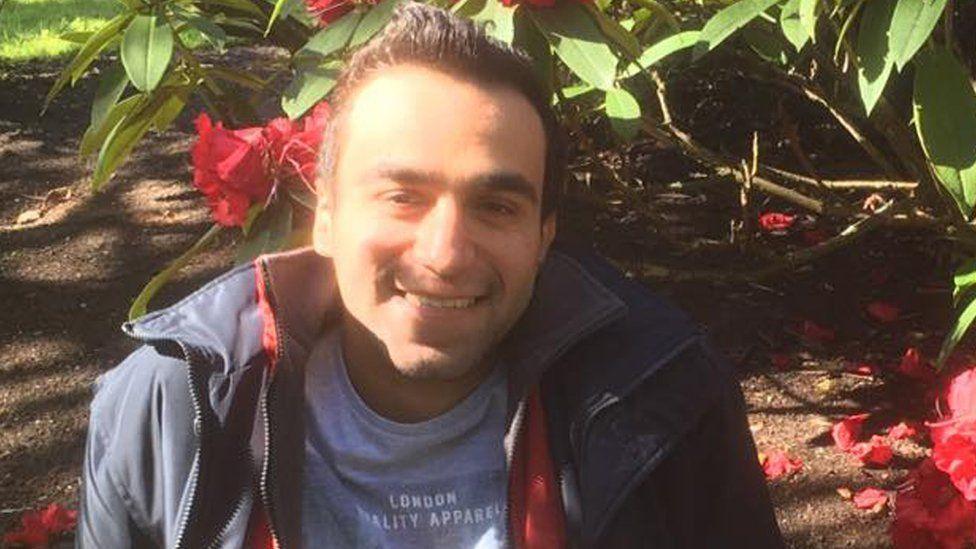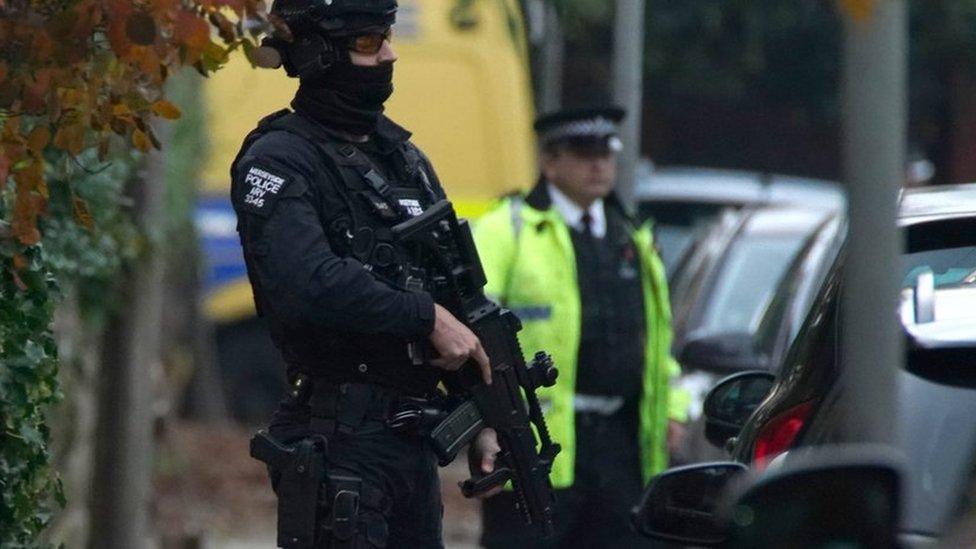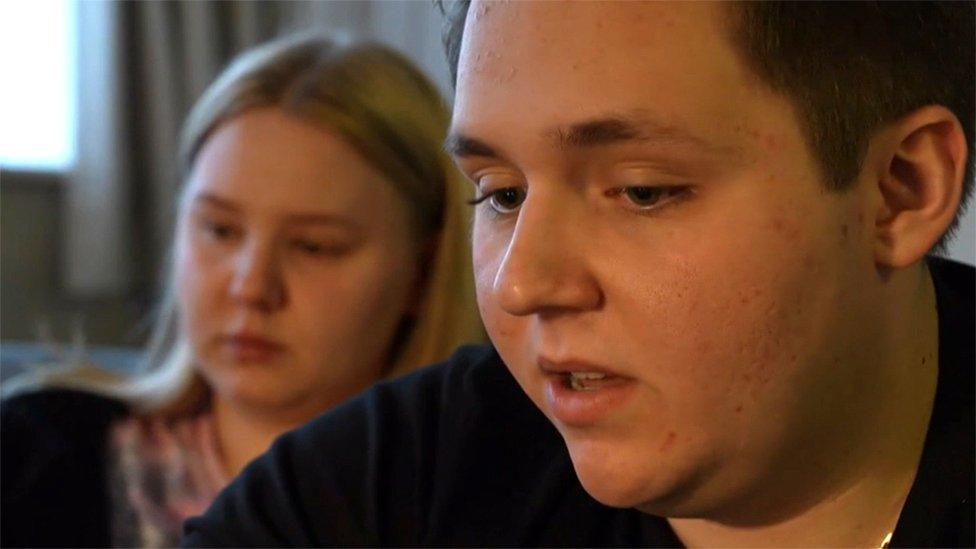Liverpool bomb: Homemade device used ball bearings as shrapnel, police say
- Published
Watch: The cab pulled up outside Liverpool Women's Hospital and exploded into flames
The bomb which exploded near Liverpool Women's Hospital contained homemade explosives and ball bearings and could have caused "significant injury or death", police have revealed.
Emad Al Swealmeen's device exploded shortly before 11:00 GMT on Remembrance Sunday in a taxi outside the hospital.
Assistant Chief Constable Russ Jackson said a "completely unintentional" detonation had not been ruled out.
He added that police had found no links to the Manchester Arena attack in 2017.
Christian convert Al Swealmeen, 32, was a passenger in the taxi when his device exploded.
Driver David Perry escaped seconds before the vehicle was engulfed in flames.
A post-mortem examination found Al Swealmeen died from injuries caused by the explosion and subsequent fire.
Mr Jackson, head of Counter Terrorism Police North West, said it was still unknown why the bomb exploded when it did, "but we are not discounting it being completely unintentional".
"It is a possibility that the movement of the vehicle, or its stopping, caused the ignition," he explained.
He said the bomb had been made "using homemade explosive and had ball bearings attached to it which would have acted as shrapnel".
"Had it detonated in different circumstances we believe it would have caused significant injury or death," added Mr Jackson.

Police said no links had been found between Al Swealmeen and the Manchester Arena bombers
He said detectives were trying to understand "the way the purchases for the ingredients to make the device were made".
That work was complicated "because purchases have spanned many months and Al Swealmeen has used many aliases", Mr Jackson said.
Police previously said Al Swealmeen had been renting a property in Rutland Avenue, near Sefton Park in Liverpool, since April and was making "relevant purchases" for his bomb from at least that time.
Mr Jackson said "significant progress" was being made in the investigation, which includes ongoing searches at the Rutland Avenue address and at another property on Sutcliffe Street in Kensington.
He said officers had "found no connection between this incident and the terrible events of Manchester in May 2017" and that the device "was also different to the one used in the Manchester Arena attack".
He also said police had spoken with the bomber's brother and had gained "an insight into his early years and an understanding of Al Swealmeen's life and his recent state of mind".
Mr Jackson added that detectives were also "grateful" to the "members of the public who knew him and have contacted us".

Emad Al Swealmeen during a service at Liverpool's Anglican Cathedral, alongside Bishop Cyril Ashton
Al Swealmeen is not believed to have been known to MI5, according to BBC security correspondent Gordon Corera.
One of the members of his tribe in Jordan told the BBC that the bomber was Jordanian, but born in Iraq, and had a history of mental illness. His family settled in the United Arab Emirates in 1996.
Al Swealmeen left for Syria 12 years ago, then headed to Turkey.
He reportedly arrived in the UK in 2014 and had an application for asylum, in which he claimed to be Syrian, rejected the following year, but had made a fresh appeal in January this year.
His submissions were under review at the time of his death.

Why not follow BBC North West on Facebook, external, Twitter, external and Instagram, external? You can also send story ideas to northwest.newsonline@bbc.co.uk, external
Related topics
- Published18 November 2021

- Published18 November 2021

- Published17 November 2021

- Published17 November 2021
